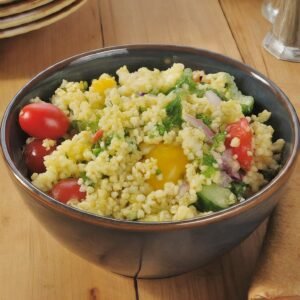
Millet, often overlooked in the modern diet, is making a strong resurgence as people seek healthier and more sustainable food options. These tiny but mighty grains have been a staple food for centuries, particularly in regions with arid climates. Let’s delve into the world of millets and explore their nutritional benefits, varieties, and culinary uses.
What are Millets?
Millets are a diverse group of small-seeded grasses cultivated for their edible grains. They belong to the Poaceae family and are closely related to other grains like rice, wheat, and corn. Known for their resilience to drought and poor soil conditions, millets have been cultivated for thousands of years and played a crucial role in the history of agriculture.
Nutritional Powerhouse
They are packed with essential nutrients, making them a valuable addition to any diet. They are:
- Gluten-free: A boon for individuals with celiac disease or gluten sensitivity.
- Rich in fiber: Promotes digestive health and helps control blood sugar levels.
- High in protein: Provides essential amino acids for muscle building and repair.
- Excellent source of minerals: Including iron, magnesium, phosphorus, and zinc.
- Low in fat: Making them a heart-healthy choice.
Types of Millets

There are numerous varieties of millets, each with its unique characteristics and flavor profile. Some of the most common types include:
- Pearl millet: The most widely cultivated millet, known for its drought resistance.
- Finger millet: Rich in calcium and iron, commonly used in Indian cuisine.
- Foxtail millet: Small, round grains with a nutty flavor.
- Proso millet: The smallest millet, with a slightly sweet taste.
- Sorghum: Often classified as a millet, this grain is larger and slightly chewy.
Culinary Versatility of Millet
Millets are incredibly versatile and can be incorporated into various dishes. Here are some popular ways to enjoy millets:

- Millet pilaf: A flavorful side dish with a nutty taste.
- Millet salads: A refreshing and healthy summer meal.
- Millet-based desserts: Explore the sweet side of millets with puddings and cakes.
Specific Millet Recipes
Here are some specific recipes for millet to help you get started:
Millet porridge with fresh berries and nuts:

- Millet pancakes with syrup and fruit:
Millet salad with colorful vegetables and a dressing:

Health Benefits of Millets
Millets are a good source of fiber, which can help to improve digestion and promote regularity. They are also a good source of protein, which is essential for building and repairing tissues. Additionally, millet is a good source of several vitamins and minerals, including iron, magnesium, phosphorus, and zinc.
How to Cook
They are very easy to cook. Simply follow the instructions on the package. Most millets require a 1:2 ratio of millet to water. Bring the water to a boil, add the millet, and then reduce the heat to low and simmer for 15-20 minutes, or until the millet is cooked through.
Tips for Using Millets
- Millet can be used as a substitute for rice or other grains in your favorite dishes.
- Millet can be added to soups, stews, and casseroles.
- Millet can be used to make pancakes, muffins, and breads.
- Millet can be used as a topping for yogurt or cereal.
Environmental Benefits of Millet
In addition to their nutritional value, millets offer several environmental advantages. They require less water and fertilizer than other grains, making them a sustainable crop choice. Millets also help improve soil health and biodiversity.
Conclusion
They are a nutritional powerhouse with a rich history and a promising future. Their versatility, health benefits, and sustainability make them an excellent choice for conscious consumers. By incorporating millet into your diet, you can enjoy delicious and nutritious meals while supporting a more sustainable food system.


